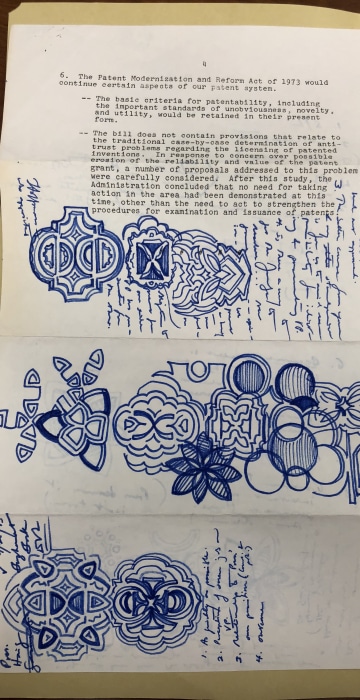
Maddow: Bag Man podcast
Bag Man Episode 5 supplemental materials
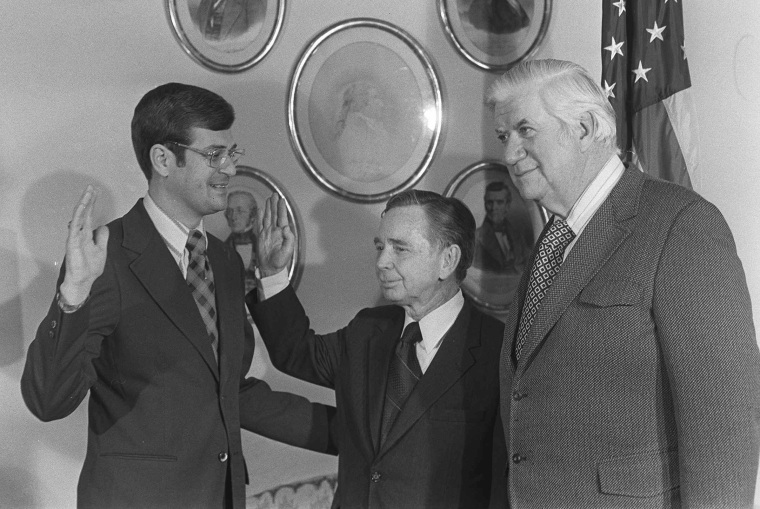
"The Little Giant"
Democratic House Speaker Carl Albert of Oklahoma (pictured, middle) at a swearing in ceremony in January 1973. Speaker Albert — nicknamed "The Little Giant" — made preparations, in secret, that Fall in case he suddenly had to assume the Presidency, in the event that both President Nixon and Vice President Agnew were removed from office.
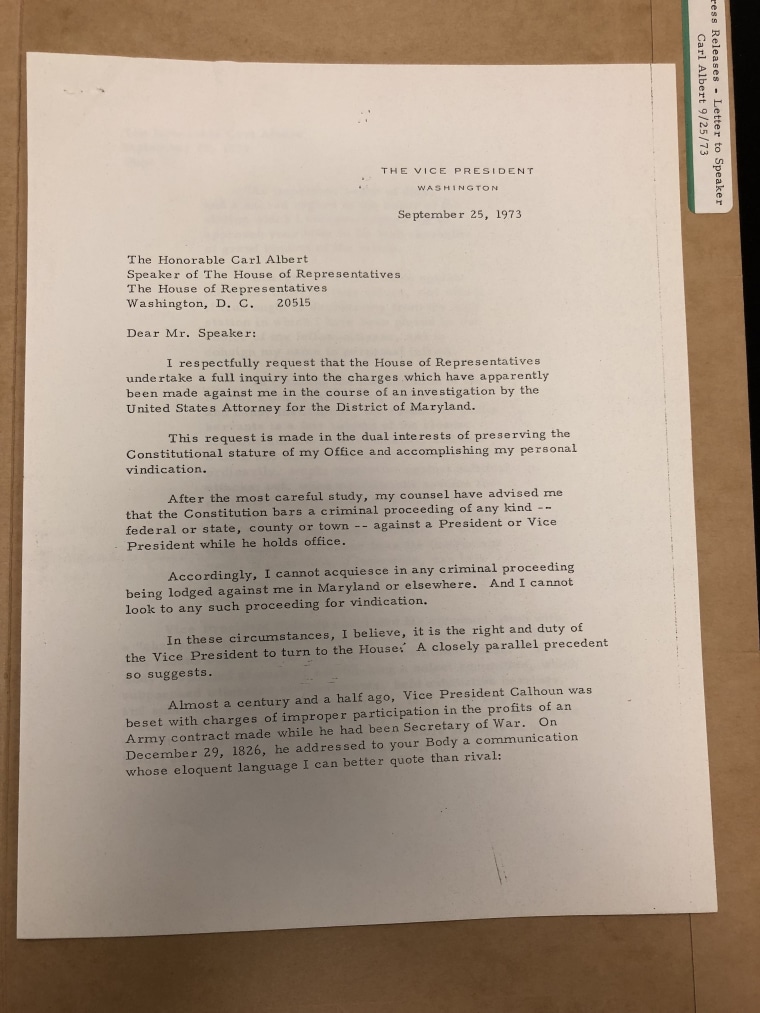
Agnew Asks For Impeachment Inquiry (page 1)
Vice President Spiro T. Agnew's letter to Democratic House Speaker Carl Albert in September 1973 (three pages). Agnew attempted to get Congress to take up his case as he argued that a sitting Vice President can't be criminally indicted, only impeached. Speaker Albert refused Agnew's request.
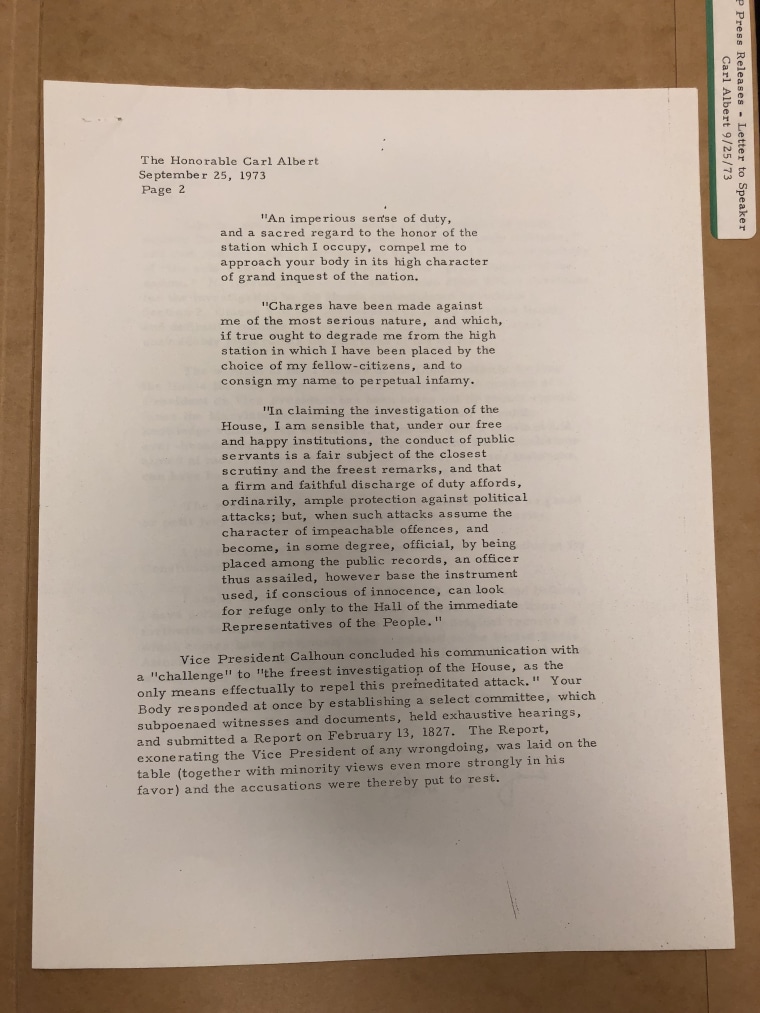
Agnew Asks For Impeachment Inquiry (page 2)
Vice President Spiro T. Agnew's letter to Democratic House Speaker Carl Albert in September 1973 (three pages). Agnew attempted to get Congress to take up his case as he argued that a sitting Vice President can't be criminally indicted, only impeached. Speaker Albert refused Agnew's request.
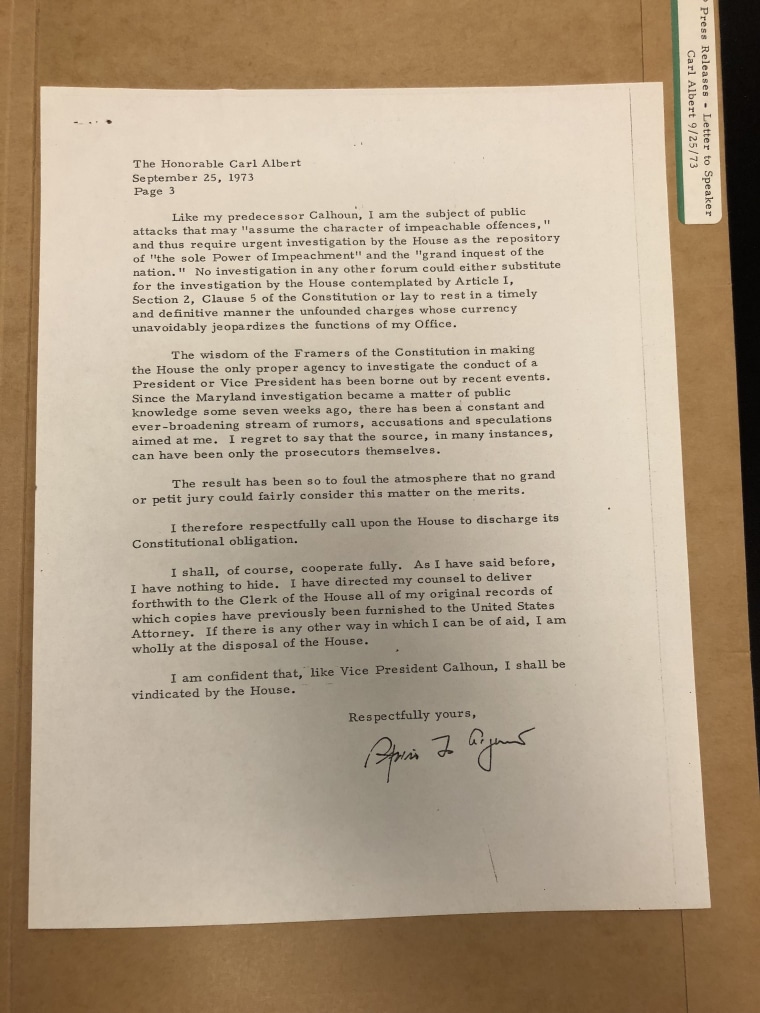
Agnew Asks For Impeachment Inquiry (page 3)
Vice President Spiro T. Agnew's letter to Democratic House Speaker Carl Albert in September 1973 (three pages). Agnew attempted to get Congress to take up his case as he argued that a sitting Vice President can't be criminally indicted, only impeached. Speaker Albert refused Agnew's request.
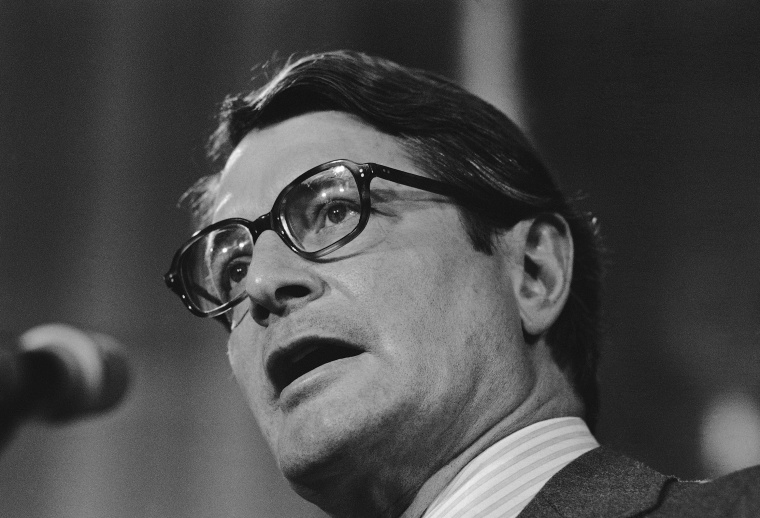
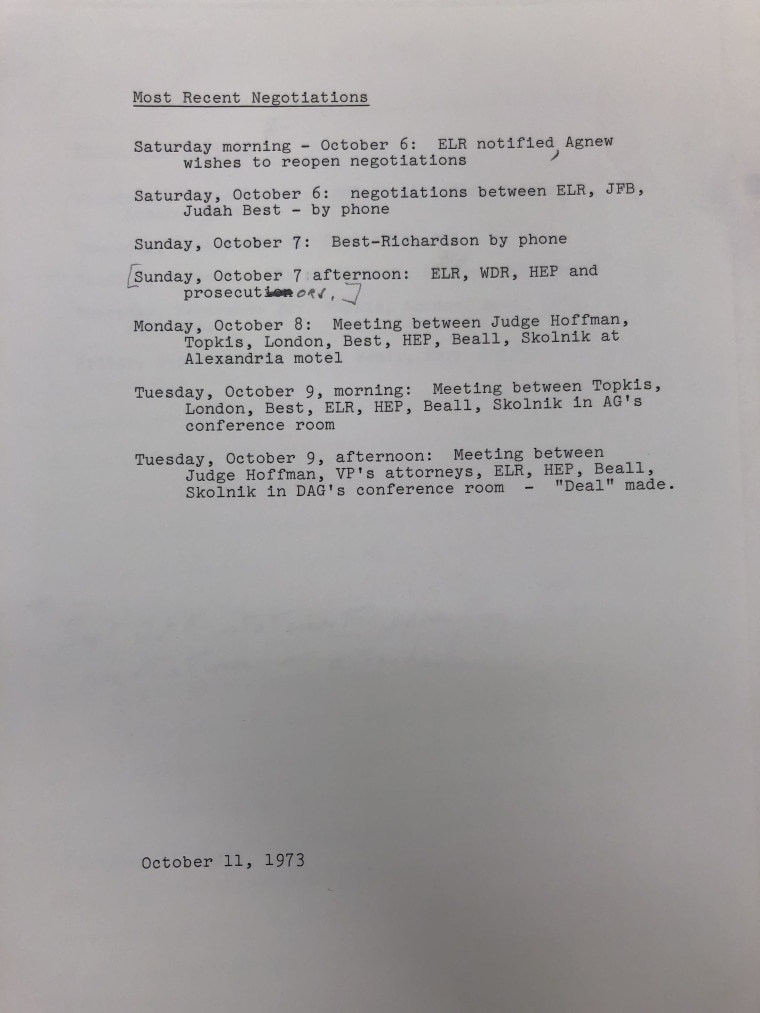
Forcing Agnew Out
Notes from Attorney General Elliot Richardson, detailing the secret negotiations between the Justice Department and defense lawyers for Vice President Spiro T. Agnew. AG Richardson launched a high-stakes mission to force Agnew from office by threatening him with criminal prosecution.
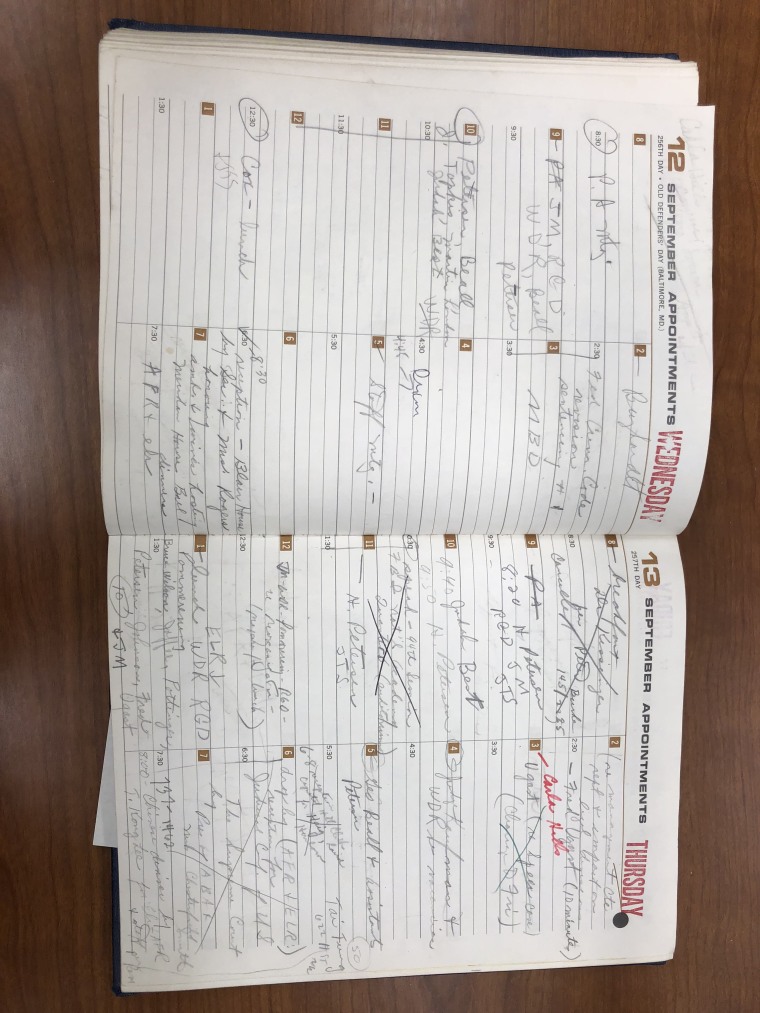
High Stakes Negotiations
Attorney General Elliot Richardson's Appointment Calendar from September 1973. AG Richardson personally led a series of secret negotiations aimed at securing the resignation of Vice President Spiro T. Agnew (pictured: meetings with VP Agnew's defense lawyers Jay Topkis, Martin London, and Judah Best)

Richardson's Doodles
Attorney General Elliot Richardson was famous for creating elaborate doodles, often while he was in the middle of important meetings. Richardson doodled around notes about the Vice President Agnew investigation in September of 1973 (pictured, bottom)

The Deal Is Done
Attorney General Elliot Richardson's handwritten notes from October 9, 1973. A.G. Richardson reached a plea deal that day with Vice President Spiro Agnew's attorneys, which called for Agnew's immediate resignation from office. The deal was reached in the presence of federal judge Walter Hoffman (noted at the top) and a court date was set for the very next day.